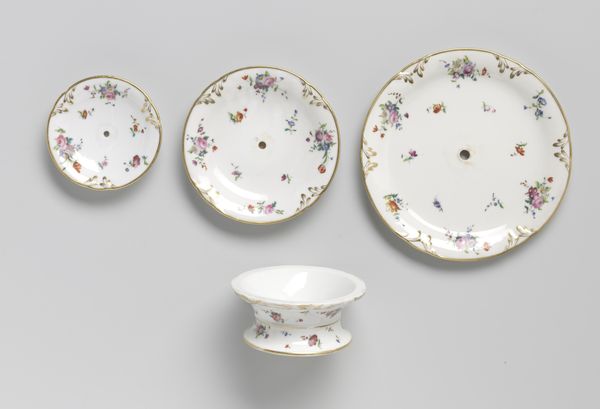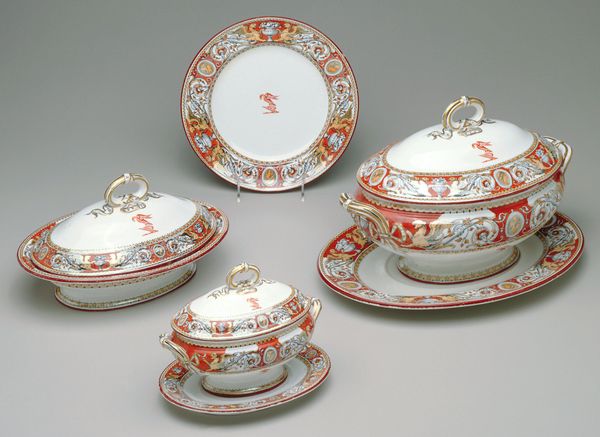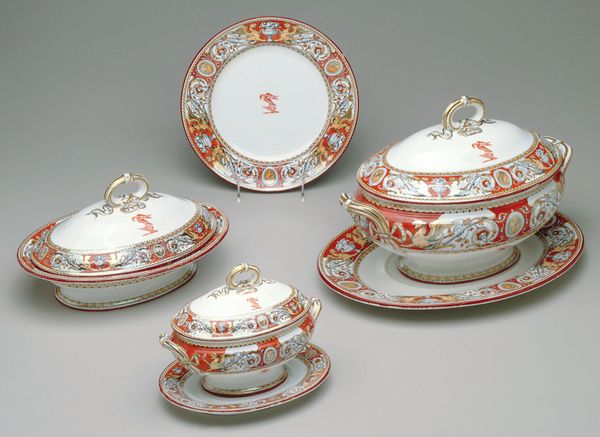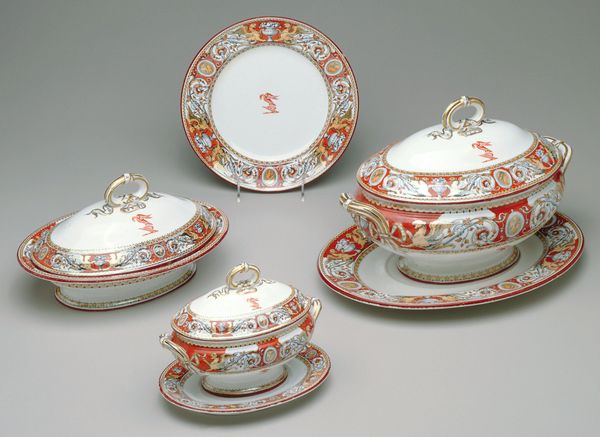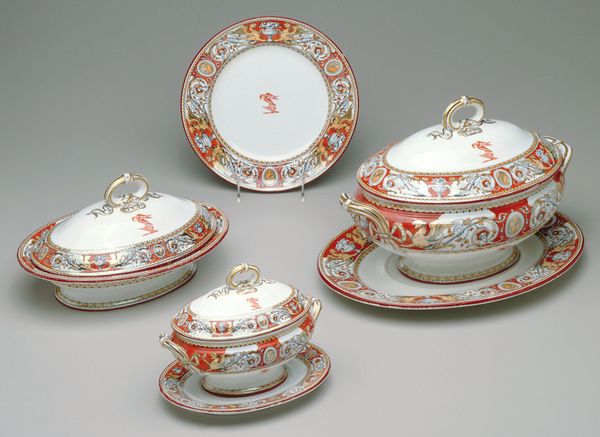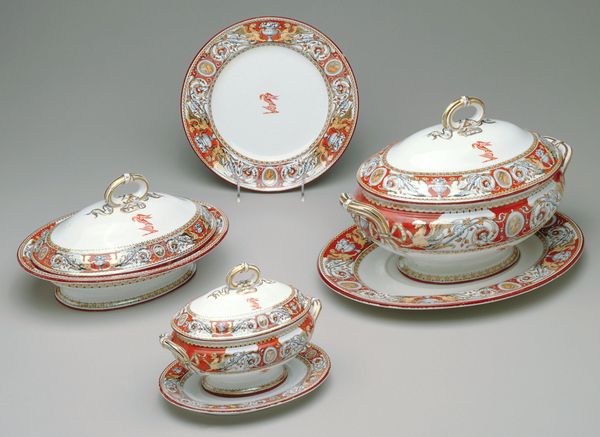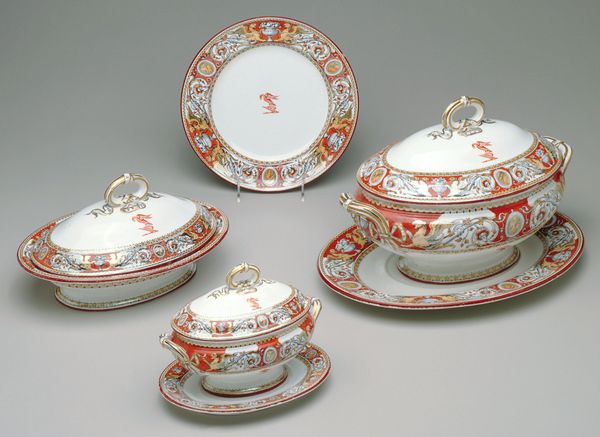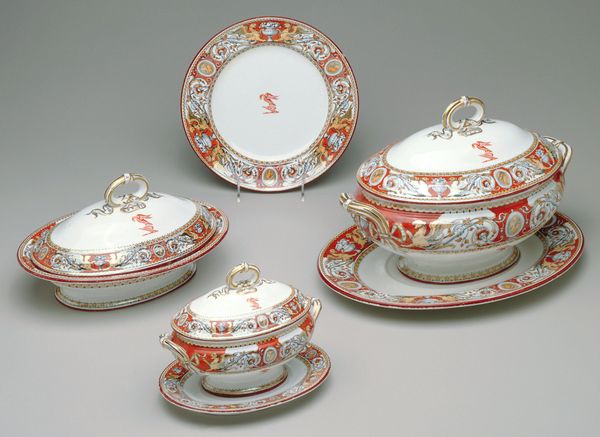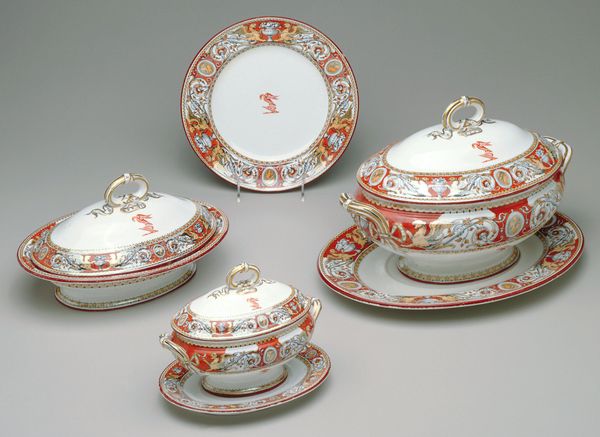
Copyright: Rijks Museum: Open Domain
Editor: This is the "Theeservies," a ceramic tea service crafted around 1784 by Loosdrecht. The delicate floral patterns and Rococo style give it a charming feel. What strikes me is the way something so functional is elevated to art. What’s your take on this piece? Curator: For me, it's all about understanding the social and economic context of its creation. This tea service speaks volumes about 18th-century Dutch society, and not just in terms of aesthetics. Consider the resources – the ceramic itself, the pigments used for the decoration, the labor involved. These weren't easily accessible or cheap. Editor: Right, it shows a certain level of wealth and access to specialized skills. Curator: Exactly! Porcelain production in Loosdrecht was a conscious attempt to compete with established European manufacturers like Sèvres. Think about the factory system, the division of labor—who were the artists who painted these tiny flowers? Were they men, women, children? This teaset isn't just decorative; it's a product of a specific mode of production, an early form of industrial manufacture even. Editor: So, the beauty on the surface obscures a more complex reality of production and consumption. Curator: Precisely. It also raises questions about the boundaries between art and craft. Was this “art” or industrial product? Also consider the raw materials to make a single piece - can you imagine? What social relations are embedded within the serving set, from the potter's wheel to the consumer's table? Editor: That really gives me a new perspective, seeing it as more than just a pretty object. Curator: Indeed. By examining the materiality and production process, we unlock a deeper understanding of its cultural significance. Editor: I’ll definitely look at decorative arts with a different lens now. Thanks!
Comments
No comments
Be the first to comment and join the conversation on the ultimate creative platform.
